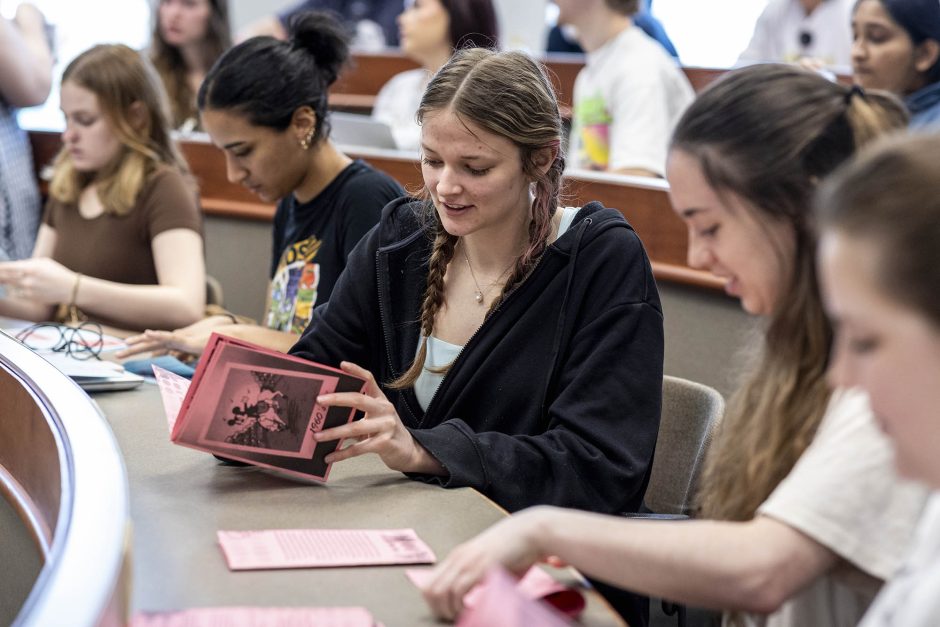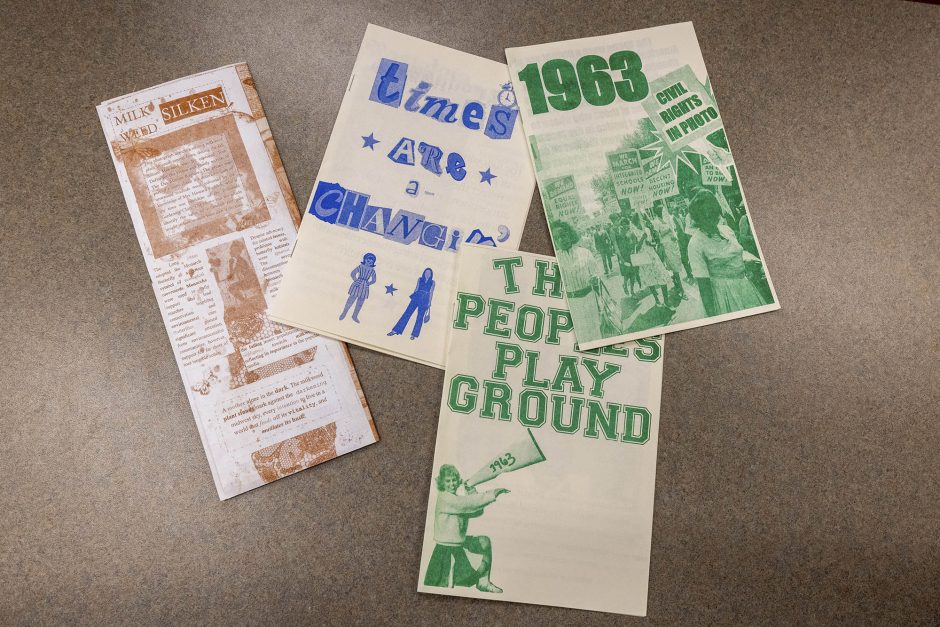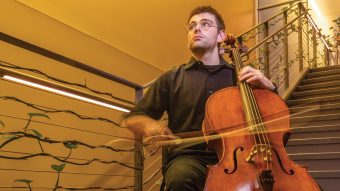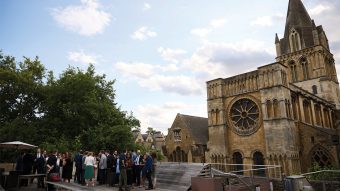
May 7, 2025
Contact: Sara Diedrich, diedrichs@missouri.edu
Photos by Gretta Cohoon
At the University of Missouri, students are discovering that a photograph does more than capture a moment — it reveals the spirit of its time, shaped by the ideas, values and beliefs of the era.
In a unique interdisciplinary course, students explore the vast digital archive of Pictures of the Year (POY) to examine how mass and popular culture in 1960s America shaped public perception and understanding of the world. Inspired by Kristin Schwain, professor of art history in the School of Visual Studies, and Lynden Steele, director of photojournalism and news archiving at the Missouri School of Journalism, the course — Introduction to Visual Culture — invites students to analyze the lasting influence of visual media from that pivotal time in American history.
The POY archive gives students unparalleled access to one of the world’s most prestigious collections of photojournalism — a resource unique to Mizzou. What began in 1944 as a photographic contest has grown into Pictures of the Year International, a global competition that now draws thousands of entries annually and includes seminars, workshops and educational programming.
“POY has an 80-year legacy, and its extensive archive of photographs is a remarkable resource,” Steele said. “Over the years, this archive has served as a vital primary source for countless master’s theses, PhD dissertations and academic projects. We saw an opportunity to build on that tradition — and to go even further.”
To date, the School of Journalism has a growing digital database of more than 40,000 POY images. This semester, students in the visual studies course — who represent seven schools and colleges on campus — each selected a photograph from 1963, a critical year in American history, to research and write about.
“To learn how mass and popular culture generate ways of seeing in particular times and places, we are examining the visual practices of the 1960s in the United States and the commonly shared media, historical associations and cultural habits that shaped them,” Schwain said.

All about collaboration
In addition to researching and writing about their individual photographs, students worked in groups of four or five to identify a shared theme among their images. Each group then created a zine — small handmade art book — that wove the photographs together and told a story about the 1960s. The finished zines were printed in The Riso Room at the School of Visual Studies, using a machine similar to a Xerox copier that can print a range of bright colors.
Some of the zines were shared during a recent Photo Fest at the journalism school and at an exhibition at Orr Street Studios in Columbia.
Mary Karcher, a doctoral student in visual studies who teaches a section of the course, said the students also learned the value of collaboration through their projects.
“For me, the most valuable aspect of this class is the emphasis on collaboration — whether it's working with the journalism school, scheduling The Riso Room or working with each other to bring our projects to life,” she said. “It’s a great opportunity to develop teamwork skills, navigate challenges and engage in meaningful conversations, even when they’re difficult.”
Karcher said the students also celebrate group successes — whether it's recognizing when someone does something exceptional or when the team achieves a milestone. Each group signs a contract at the start, and part of that includes choosing how they’ll celebrate wins together.
“This practice strengthens our sense of collaboration and community,” she said.
Seeing in a new way
Along the way, the students also sharpened their ability to critically engage with visual media and hopefully respond to it with more insight, care and critical thinking.
Maia Trotter, a freshman majoring in graphic design with a minor in art history, chose a haunting photograph of President John F. Kennedy lying in state, his flag-draped coffin illuminated in a beam of sunlight.
“It really struck me when I saw it,” she said. “It’s almost like a Renaissance painting with the light spilling in from a window above. I hadn’t explored much about the Kennedy administration or his assassination before this. Diving into the history behind the image was fascinating. The class has been an interesting way to learn about history.”



